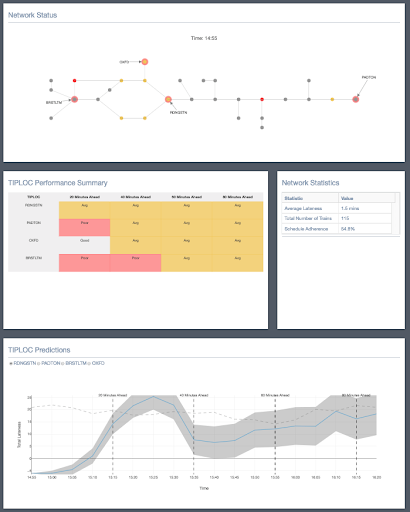Reducing train delays using highly accurate forecasting
We built a predictive model for a train signalling company that provides warnings of train delays to controllers up to 60 minutes in advance, 50% more accurately than any previous forecasting method.
More accurate than any previous forecasting method
Background
The company currently manages railway traffic on a major route out of London. There are nine control points and 120 miles of rail network on that line operating close to 2,500 trains each day that start or end at the main London terminal. Fewer than 30% of trains are within one minute of their plan at any location. The number of trains arriving at their destination within their targeted scheduled time is currently 82%. The aim is to achieve 90–92%. In June 2018 the company launched a real-time monitoring system on the route. We were asked to build a layer of intelligence into its product to predict when delays were likely to happen and then to guide controllers to take the right action to minimise the impact on the network.
Solution
We used a three-stage approach to model train delays. First, we predicted delays by using historical data to create network snapshots, tracking train positions, lateness, and timetables. To capture the complex relationships in the network, we trained two models, one to monitor current delays and another to understand how network interactions cause delays. To help controllers identify the causes of delay,we trained models to learn about fundamental patterns in the way the network operates. This included analysing the impact of short-term planned trains to throughput limits at particular junctions.
Finally, we tested the extent to which the historical data could support making recommendations to controllers. Focusing on re-platforming (moving trains to alternative platforms) to reduce delays. At the London terminal, one in five trains is re-platformed. To help optimise this decision, we built a model to predict the risk of double occupation, and therefore delay. By training models to predict both the arrival time and the time a train takes to turn around, we were able to create an algorithm that could recommend the optimum platform change. Each of the models was built into a live dashboard to help controllers manage delays pre-emptively.

Impact
The predictive model provides warnings of delays to controllers up to 60 minutes in advance, 50% more accurately than any previous forecasting method. The re-platforming model has the potential to save up to 200 minutes of lateness every day at the London terminus.